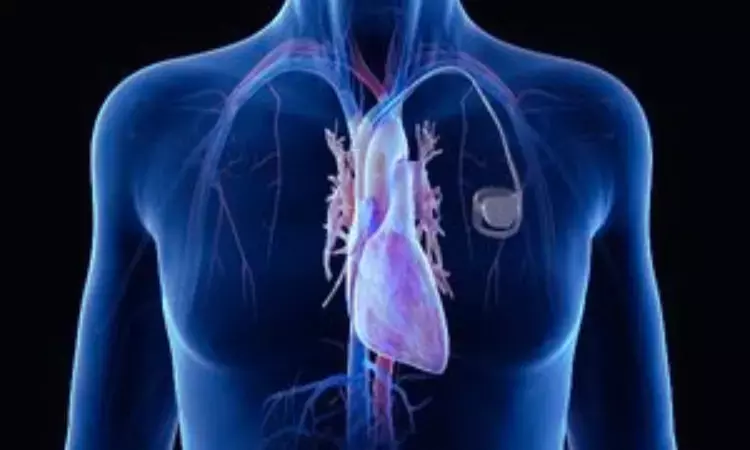- Home
- Medical news & Guidelines
- Anesthesiology
- Cardiology and CTVS
- Critical Care
- Dentistry
- Dermatology
- Diabetes and Endocrinology
- ENT
- Gastroenterology
- Medicine
- Nephrology
- Neurology
- Obstretics-Gynaecology
- Oncology
- Ophthalmology
- Orthopaedics
- Pediatrics-Neonatology
- Psychiatry
- Pulmonology
- Radiology
- Surgery
- Urology
- Laboratory Medicine
- Diet
- Nursing
- Paramedical
- Physiotherapy
- Health news
- Fact Check
- Bone Health Fact Check
- Brain Health Fact Check
- Cancer Related Fact Check
- Child Care Fact Check
- Dental and oral health fact check
- Diabetes and metabolic health fact check
- Diet and Nutrition Fact Check
- Eye and ENT Care Fact Check
- Fitness fact check
- Gut health fact check
- Heart health fact check
- Kidney health fact check
- Medical education fact check
- Men's health fact check
- Respiratory fact check
- Skin and hair care fact check
- Vaccine and Immunization fact check
- Women's health fact check
- AYUSH
- State News
- Andaman and Nicobar Islands
- Andhra Pradesh
- Arunachal Pradesh
- Assam
- Bihar
- Chandigarh
- Chattisgarh
- Dadra and Nagar Haveli
- Daman and Diu
- Delhi
- Goa
- Gujarat
- Haryana
- Himachal Pradesh
- Jammu & Kashmir
- Jharkhand
- Karnataka
- Kerala
- Ladakh
- Lakshadweep
- Madhya Pradesh
- Maharashtra
- Manipur
- Meghalaya
- Mizoram
- Nagaland
- Odisha
- Puducherry
- Punjab
- Rajasthan
- Sikkim
- Tamil Nadu
- Telangana
- Tripura
- Uttar Pradesh
- Uttrakhand
- West Bengal
- Medical Education
- Industry
Need for pacemaker still common after TAVR with self-expanding valves: JACC

Italy: A recent study published in JACC: Cardiovascular Interventions demonstrated the frequent need for new permanent pacemaker implantation (PPI) after TAVR with contemporary self-expanding valves (SEV). Furthermore, it was shown to be associated with higher 1-year mortality, specifically in patients with EF under 40%.
The international registry data results also revealed that the need for PPI could be independently predicted with baseline right bundle branch block and depth of transcatheter heart valves (THV) implantation.
"Of patients treated with Evolut PRO/PRO+ valve or an Acurate neo/neo2 (approved outside the U.S.), 11.3% required new permanent pacemaker implantation in the 30 days following the procedure," Matteo Pagnesi, University of Brescia, Brescia, Italy, and colleagues reported in their study.
"New recipients of PPI had a mortality rate of 16.9% at 1 year compared with a rate of 10.8% among other patients, which was a significant 66% elevated relative risk even after adjustment for other factors."
Previous studies have already shown the frequent need for PPI post-TAVR, but data on new-generation SEV and the prognostic impact of PPI are conflicting. Considering this, Dr. Pagnesi and the team sought to evaluate the predictors, incidence, and outcomes of new permanent pacemaker implantation after TAVR (transcatheter aortic valve replacement) with contemporary self-expanding valves.
For this purpose, the researchers included 3,211 patients enrolled in the multicenter NEOPRO and NEOPRO-2 registries from 2012 to 2021 who underwent transfemoral TAVR with SEV. Implanted transcatheter heart valves were Acurate neo2 (n = 665), Acurate neo (n = 1,090), Evolut PRO+ (n = 144), and Evolut PRO (n = 1,312). They evaluated predictors and incidence of new PPI and 1-year outcomes.
The study led to the following findings:
- New PPI was needed in 11.3% of patients within 30 days after TAVR (8.8%, 7.7%, 15.2%, and 10.4%, respectively, after Acurate neo, Acurate neo2, Evolut PRO, and Evolut PRO+).
- Independent predictors of new PPI were the Society of Thoracic Surgeons Predicted Risk of Mortality score, baseline right bundle branch block and depth of THV implantation, both in patients treated with Acurate neo/neo2 and in those treated with Evolut PRO/PRO+.
- Predischarge reduction in ejection fraction (EF) was more frequent in patients requiring PPI.
- New PPI was associated with higher 1-year mortality (16.9% versus 10.8%; adjusted HR: 1.66), particularly in patients with baseline EF <40%.
"Our findings showed that new PPI was frequently needed after TAVR with SEV (11.3%) and was associated with higher 1-year mortality, particularly in patients with ejection fraction <40%," the researchers wrote. "Depth of THV implantation and baseline right bundle branch block independently predicted the need for PPI."
Reference:
Pagnesi M, et al "Incidence, predictors, and prognostic impact of new permanent pacemaker implantation after TAVR with self-expanding valves" J Am Coll Cardiol Intv 2023; DOI: 10.1016/j.jcin.2023.05.020.
Dr Kamal Kant Kohli-MBBS, DTCD- a chest specialist with more than 30 years of practice and a flair for writing clinical articles, Dr Kamal Kant Kohli joined Medical Dialogues as a Chief Editor of Medical News. Besides writing articles, as an editor, he proofreads and verifies all the medical content published on Medical Dialogues including those coming from journals, studies,medical conferences,guidelines etc. Email: drkohli@medicaldialogues.in. Contact no. 011-43720751


